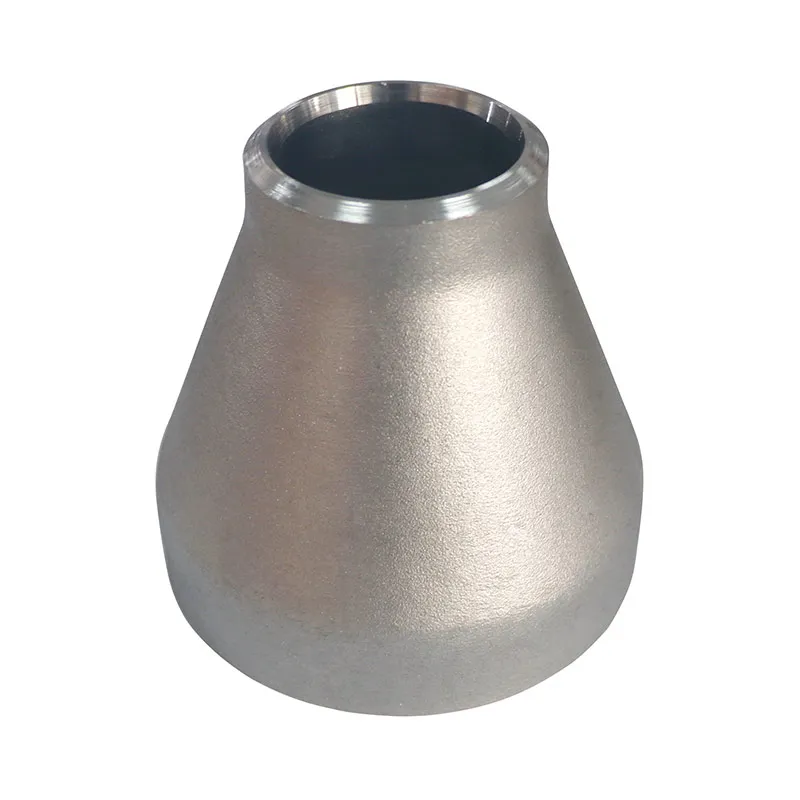-
Cangzhou Yulong Steel Co., Ltd.
-
Phone:
+86 13303177267 -
Email:
admin@ylsteelfittings.com

Nov . 09, 2024 23:57 Back to list
Different Types of Flanges Utilized in Piping Systems for Various Applications
Types of Flanges Used in Piping Systems
Flanges are integral components in piping systems, serving as a means of joining pipes, valves, and other equipment. They provide a secure connection that allows for the easy assembly and disassembly of piping components, facilitating maintenance and repair. Flanges come in various types, each designed for specific applications and operating conditions. Understanding the different types of flanges is crucial for engineers and technicians involved in the design, installation, and maintenance of piping systems.
1. Welding Neck Flanges
Welding neck flanges feature a long neck that gradually tapers to a pipe. This design allows for a smooth transition between the flange and the pipe, reducing the risk of turbulence and providing excellent strength. Welding neck flanges are typically used in high-pressure systems where durability is essential. They are available in various materials, including carbon steel, stainless steel, and alloy steel, making them suitable for a wide range of industries.
2. Slip-On Flanges
Slip-on flanges are designed to slide over the pipe's ends, allowing for easy alignment and placement before welding. They are simpler to install than welding neck flanges and are often used in lower-pressure applications. While they do not provide as strong a joint as welding neck flanges, they are a cost-effective option for many piping systems. Slip-on flanges can also be used in systems with lower temperature and pressure requirements.
3. Blind Flanges
Blind flanges are solid flanges with no hole, used to seal the end of a piping system. They are essential for maintaining pressure and preventing the ingress of contaminants. Blind flanges can be used in various applications, including pressure vessels and as endpoints for pipelines that require temporary closure. Their design allows for easy installation and removal when necessary.
4. Threaded Flanges
Threaded flanges have internal threads that allow them to be screwed directly onto the pipe. This type of flange is ideal for applications where welding is impractical, such as in systems that are not designed to be permanently sealed. Threaded flanges are commonly used in low-pressure systems and are available in various materials, although they are less favored for high-stress applications due to their susceptibility to leakage.
types of flanges used in piping

Socket weld flanges are designed to fit inside a pipe, providing a strong and permanent connection. The pipe is inserted into the socket of the flange and then welded in place. This type of flange is typically used for small diameter pipes and high-pressure applications, as it allows for greater strength and reduced stress on the welded joint. Socket weld flanges are often found in chemical processing and oil and gas industries.
6. Lap Joint Flanges
Lap joint flanges consist of a stub end that is welded to the pipe and a loose flange that can be rotated, allowing easy alignment. This design is particularly useful in systems where frequent disassembly is required for maintenance. Lap joint flanges are often made of stainless steel and are commonly used in applications exposed to corrosion, making them popular in the chemical and food processing sectors.
7. Orifice Flanges
Orifice flanges are designed to facilitate the installation of flow meters and pressure sensors. They feature an orifice plate that fits between two flanges, allowing for accurate measurement of flow rates in a pipe. These flanges are typically used in metering and flow measurement applications in various industries, including oil and gas and water treatment.
8. Specialty Flanges
In addition to the standard types of flanges, there are specialty flanges designed for specific applications. These can include raised-face flanges for improved sealing, RTJ (Ring Type Joint) flanges for high-pressure environments, and flanges with unique custom designs to meet specific engineering requirements.
Conclusion
In conclusion, the choice of flange type is critical in ensuring the reliability and efficiency of a piping system. Each type of flange has its pros and cons, and the selection depends on factors such as pressure, temperature, and the nature of the fluids being transported. Proper installation and maintenance of flanges are essential for the safe and effective operation of any piping system. By understanding the various types of flanges available, engineers and technicians can make informed decisions that enhance the performance and longevity of their piping infrastructure.
Latest news
-
ANSI 150P SS304 SO FLANGE
NewsFeb.14,2025
-
ASTM A333GR6 STEEL PIPE
NewsJan.20,2025
-
ANSI B16.5 WELDING NECK FLANGE
NewsJan.15,2026
-
ANSI B16.5 SLIP-ON FLANGE
NewsApr.19,2024
-
DIN86044 PLATE FLANGE
NewsApr.19,2024
-
DIN2527 BLIND FLANGE
NewsApr.12,2024
-
JIS B2311 Butt-Welding Fittings LR/SR 45°/90° /180°Seamless/Weld
NewsApr.23,2024
-
DIN2605-2617 Butt-Welding Fittings LR/SR 45°/90°/180° Seamless/Weld
NewsApr.23,2024











